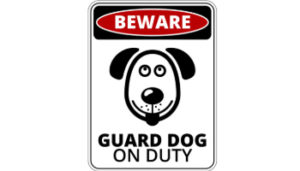
It is a well-known fact that cats hate water, with very few exceptions. Dogs, however, are not so simple. Some breeds are known to be good swimmers, and others are not. For this article, we will examine one type of dog in particular, and you can probably guess which breed it will be.
Do Labradors like to swim? The answer is a definite yes. They generally love to swim. This is unsurprising when you consider the origins of the breed. Labradors have always been used for retrieving waterfowl.
But do they actually like to swim? Well, we may not be able to read a dog’s mind, but we can certainly judge by their actions. Read on, and we will learn a little more about the modern-day descendant of the classic Canadian water dog.
What Do You Mean By “Canadian Water Dog?”
Well, the Labrador retriever is the closest living descendant of an extinct breed called the St. John’s water dog. This breed came from Newfoundland, an area that has always depended on fishing and waterfowling. As such, their dogs needed to swim just as well as themselves. This dog can still be seen in old photographs, as it did not fully die out until the 1980’s. However, we can plainly see that, in the case of the Labrador retriever, the apple didn’t fall far from the tree.
So what did our modern Labradors inherit from the water dog? For one thing, they got a thick and waterproof coat that does a great job of insulating them from the colder temperatures of water. It is a scientific fact that water will normally be 10-20 degrees colder than the air around it. Without that water-resistant fur, getting wet would be a big problem in the cold north. The Labradors also inherited the white patch of chest fur that most of them still carry to this day.
Encouraging Your Labrador To Swim
In general, Labs don’t require any special motivation to swim. Most of them will dive right in the water and love every minute of it, even as puppies. However, many puppies will show a little bit of fear when they are first brought to the edge of the water. It can help a lot if there is an older dog present, such as one of the parents. If left to their own devices, they will teach their young how to swim.
One thing you don’t want to do is force the process. That is to say; you don’t want to simply drop your pup in the water and make them swim. This can be very traumatic for a young pup who is still learning about the world around them and could result in them having less of an affinity for water as they grow. Assuming that you want your dog to be a strong swimmer, this is obviously counterproductive.
If you have a dog that just doesn’t want to swim, you will need to intervene. Begin by finding a place that is small and calm, such as a backyard pond or even a bathtub. A large body of water might be too intimidating, so keep it very small. Take him to the edge of the water and start playing with him (or her, as the case may be). Be sure to bring their favorite toy and to make them fetch repeatedly. After a while, throw the toy into the water. The hope is that their desire to get the toy will overcome their nervousness about the water. If not, just keep trying until it works. Be sure to praise and reward your furry friend when they finally get it right.
By the time the training is over, your dog will probably be leaping into the water with reckless abandon, paddling around with glee, and wondering why you don’t do the same. Labradors are so fond of leaping into the water that there are actually competitions in which retriever breeds such as Labs are judged on the distance of their water jumps. So remember, this water training is not just intended to teach your dog how to go out in the lake and fetch your ducks. You can also win some money if your dog is a good enough jumper!
Why Are Labs Such Good Swimmers?
We have already mentioned one reason for the Labrador’s extreme affinity for water, that being its water-resistant coat. However, there is more to the story. The Labrador also has a wide tail that can be used as a rudder, allowing a Lab to steer itself in the water much like a boat. Combine that with their sleek profile and you have a dog that can swim like a fish.
The Problem Of Limber Tail
Although the Labrador can swim like a fish, it is not a fish, and thus there are limits. After a long day of swimming, a Lab will often come down with a condition known as “limber tail.” also knows as “swimmer’s tail.” You can tell when they are afflicted with this condition by the fact that their tail hangs straight downward with little to no movement at all. To really test the matter, offer your dog a treat and see if they wag their tail. The dog will probably whine or cry out if you attempt to move the tail yourself, so don’t do that.
What has happened here is that your dog has exerted their tails to a point where it is now sore and unable to move without pain. It’s kind of like a weightlifter who has exerted himself by doing too many reps. The way to avoid limber tail is by simply not allowing your dog to swim for too many hours at a time without a break. Remember, they love the water more than almost anything, so they will overdo it without human intervention.
Swimming Safety For Dogs
No discussion of swimming would be complete without a few words about safety. For any creature that cannot breathe underwater, drowning is a serious risk. Since you are likely to be swimming with your dog, these rules apply to you as well!
First of all, avoid areas with strong currents. A fast-moving river is not the ideal place to take Fido for a swim. Before you know it, you and your dog could end up becoming separated and swept out to sea, which could very well be a death sentence for multiple reasons. Remember that a creek can be dangerous as well after periods of heavy rain. Another thing to consider is the cleanliness of the swimming environment. A body of water which is polluted should be off-limits for your dog, and to human swimmers as well. Remember that your dog is likely to drink at least a little bit of the water in which they swim.
You must also consider the other animals that may be lurking under the surface. In the ocean, there are too many threats to name, but sharks are the most obvious one. While sharks are not usually known to seek out human prey, a dog might not be so lucky. On the less lethal side, a jellyfish can really cause a lot of pain if your dog is unfortunate enough to meet one. Freshwater also has its animal hazards, like alligators, snapping turtles, and large predatory fish like the gar.
Related Questions
What is the best age to introduce my Labrador puppy to the water?
In general, you can give our lab puppies a chance to swim at a very young age. Puppies as young as eight weeks have been known to take right to the water and swim like a pro. However, not all of them do this right away. Expect that your pup will be a little scared at first and that the fear will not entirely go away until the dog is 3-4 months old.
Is it a good idea to let my labrador swim in the ocean?
Obviously, swimming in the ocean will always be a little more dangerous than swimming in fresh water. This is mainly due to the greater number of predators that are found in the ocean. While it would be easy to say “no, don’t let your lab into the ocean” out of fear, the fact is that you can probably take your lab to the beach without too much fear. Sharks and other predators will usually stay away from a concentrated group of active humans, meaning that there is strength in numbers. As long as your dog stays with the group, they should be just as safe as anyone else at the beach.
Will Chlorine From A Swimming Pool Harm My Dog?
If your dog regularly swims in chlorinated pool water, there is some risk. Chlorine is a toxic substance, but small amounts of it are safe. Almost every drop of water that you have ever drunk contained a small amount of chlorine, and the same goes for your dog. In general, this isn’t a huge concern because a dog will probably refrain from drinking heavily chlorinated water due to its unpleasant taste. Considering the noxious smell of chlorine and the sensitive nose of a dog, they can probably take care of themselves on this one.



